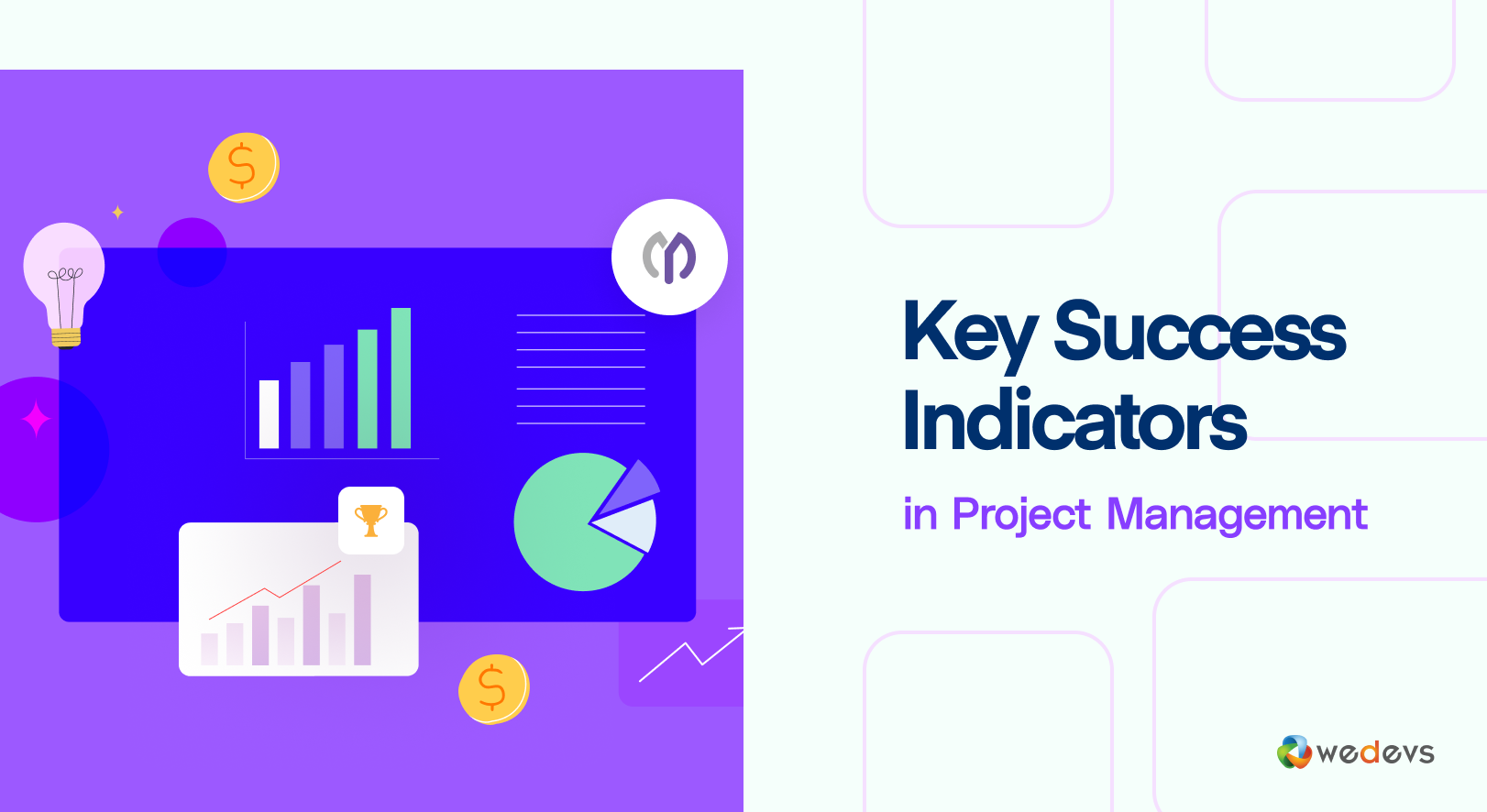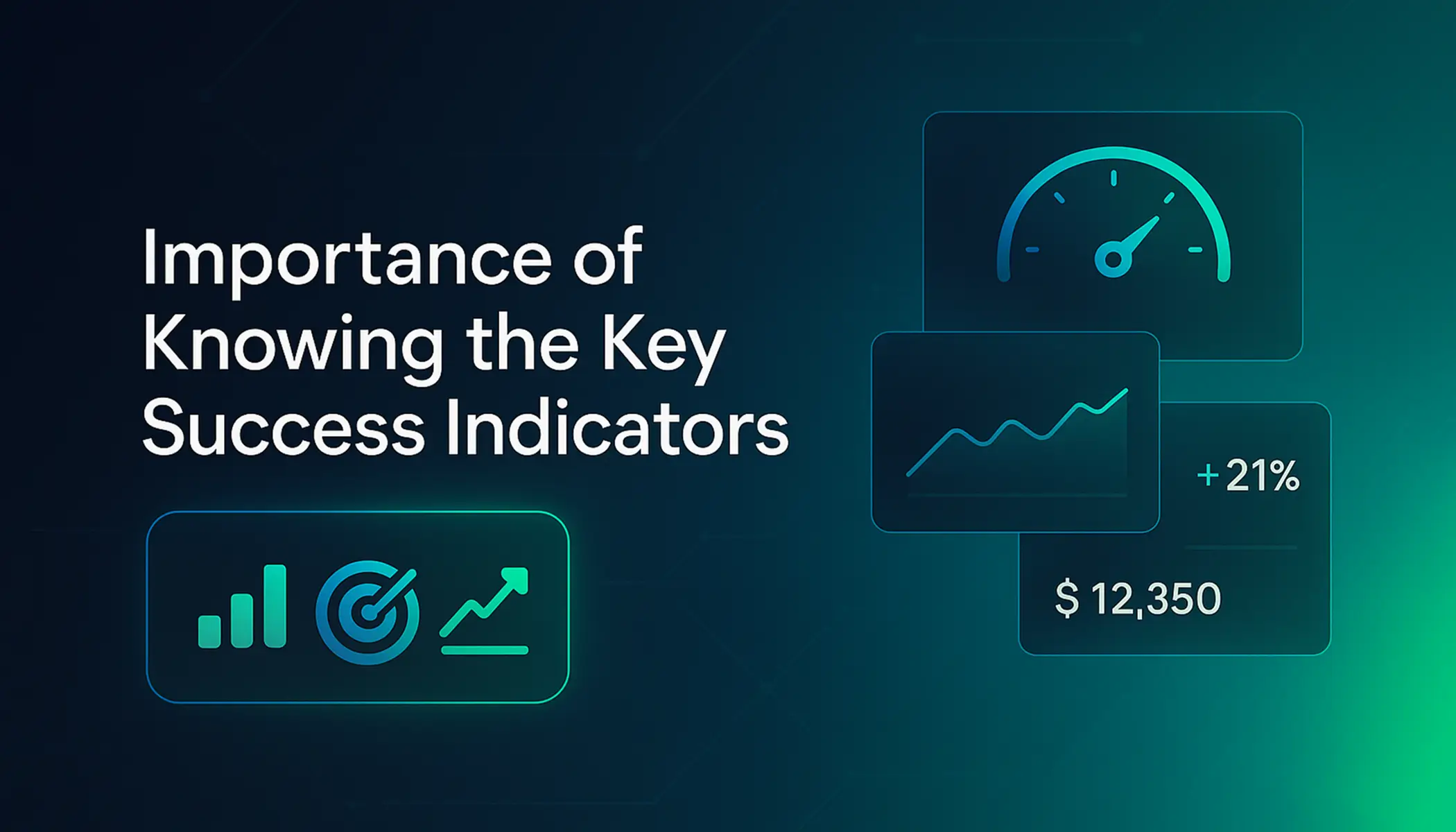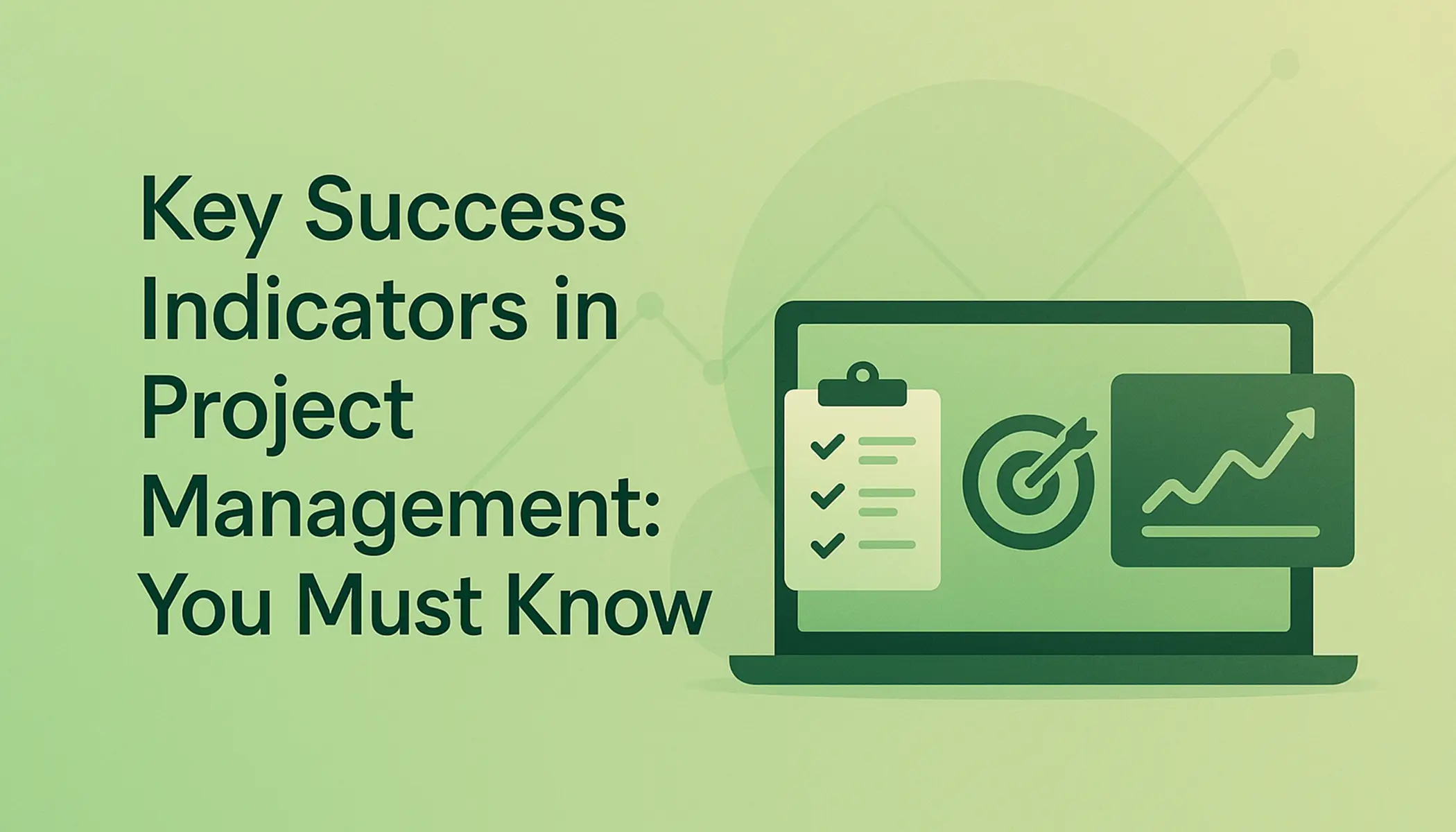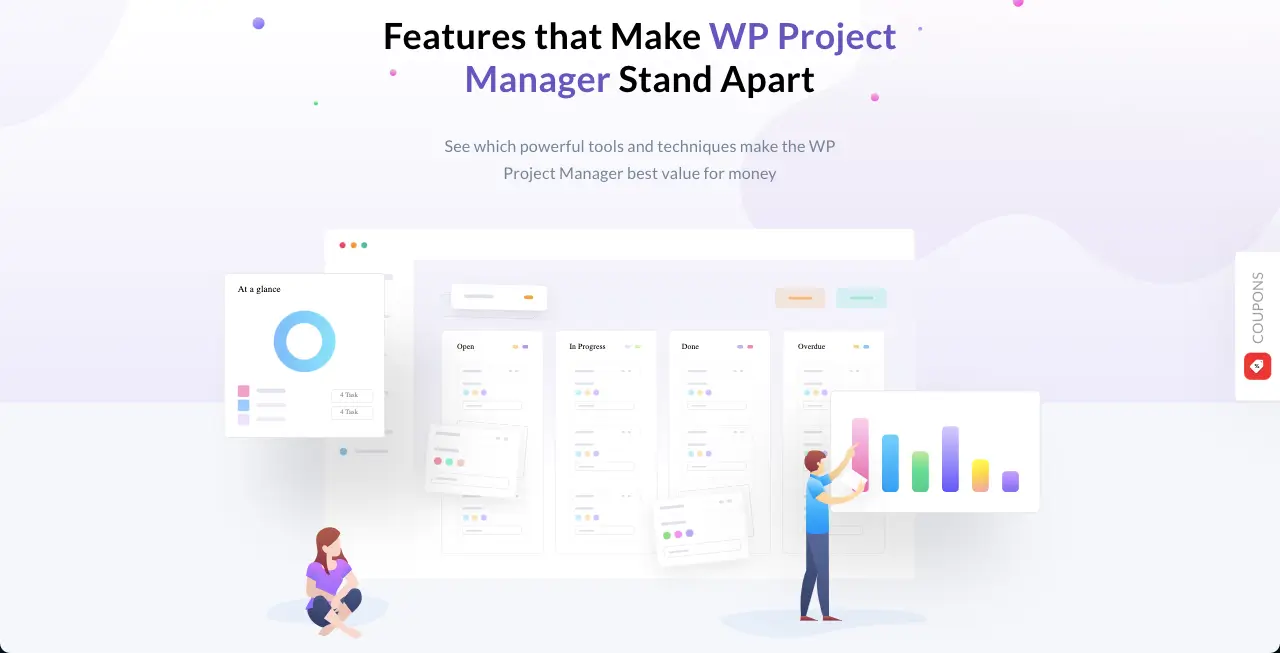
10+ Key Success Indicators in Project Management
When it comes to tracking project progress, most of us tend to use KPIs (key performance indicators) as standard metrics. But there's another powerful metric that often goes unnoticed – Key Success Indicators (KSIs). While KPIs measure how well a project is performing, KSIs reveal whether it's actually succeeding or not.
They tend to focus on tracking various strategic outcomes like stakeholder satisfaction, cost control, timeline adherence, and quality delivery. Key Success Indicators provide a concrete way to assess performance throughout a project’s life cycle. Understanding them can significantly enhance your ability to manage projects effectively and efficiently.
No matter if you are launching a small or a giant entrepreneurial initiative, knowing the right success indicators can help you stay aligned with your goals and objectives. In this blog post, we'll introduce you to some of the best key success indicators in project management with a thorough discussion.
Difference Between Key Success Indicators and Key Performance Indicators
Before going deep into the discussion, it's better to spend a few more minutes understanding the differences between key success indicators (KSIs) and key performance indicators (KPIs). Take a look at them:
| Aspects | Key Success Indicators (KSIs) | Key Performance Indicators (KPIs) |
| Metrics | Measure the achievement of critical project objectives and overall success | Track the specific performance of a project to monitor progress and efficiency |
| Focus | Outcome-oriented | Process-oriented |
| Scope | Wide. Tied to strategic objectives and long-term project success (like ROI) | Narrower. Tied to specific tasks, processes, or short-term milestones (like cost variance) |
| Nature | Qualitative, reflecting strategic success | Quantitative, focusing on measurable data |
| Measurement Timing | Often evaluated at project completion or major milestones | Monitored continuously throughout the project to track real-time performance |
Also, take a look at key project management metrics to ensure success.
Importance of Knowing the Key Success Indicators (KPIs)

Let's now take a look at why knowing the key success indicators is so important in project management. Read the points below.
a. Measures Progress Accurately
Tracking key success indicators (KSIs) like Earned Value (EV) or milestone completion rates provides a clear, data-driven view of project advancement. By comparing actual progress to planned targets, you can assess whether your project tasks are on track or lagging.
b. Improves Decision-Making
KSIs such as Cost Variance (CV) and Schedule Performance Index (SPI) empower you with real-time insights for informed decisions. By analyzing these metrics, you can prioritize tasks, reallocate resources, or address bottlenecks effectively.
c. Aligns Team with Goals
Key Success Indicators, like the percentage of deliverables, can help your team stay focused on what really matters. Clear and simple metrics make it easier for everyone to work toward the same goals, which encourages teamwork and responsibility. Learn how to improve team productivity.
d. Enables Risk Detection
KSIs, such as the number of risks mitigated or issue resolution rates, can make it easier to identify potential threats early. By monitoring these, you can proactively address issues like resource shortages or schedule delays before they escalate.
e. Boosts Resource Efficiency
Metrics like resource utilization rates and cost performance can help you optimize the usage of employees, materials, time, and budget. By monitoring them, you can identify the overuse or underuse of resources for properly reallocating them for maximum efficiency.
Top Key Success Indicators in Project Management: You Must Know

We are now into the part of today's discussion. Here, you'll get to learn 11+ key success indicators that you can consider in project management. Hope this will enhance your knowledge base. Keep reading!
1. On-Time Delivery
Completing a project on time is a crucial sign that indicates that everything has gone well. It means that the team has planned everything properly, did the work as expected, and stayed focused. But meeting a deadline doesn't mean you have to rush about everything. It’s about building trust with clients and making sure everything runs smoothly without any major flaws.
However, being timely isn't so easy. According to a report from PMI in 2021, only 54% of projects worldwide are finished on time. To stay on schedule, it's highly recommended to use a project management software so you can create a realistic timeline, design a workflow, and instantly check the progress anytime.
WP Project Manager is a WordPress-based plugin you can use for managing your projects. It's highly recommended for small and medium enterprises.
2. Budget Control
Keeping a project within the pre-defined budget is another key sign of good project management. It’s not just about spending less but spending smart. It includes planning costs well, tracking them as the project moves forward, and ensuring that the money is used in the right way.
If a project spends too much, it can lose trust and even miss out on future support. On the other hand, staying within budget shows the team is working efficiently and wisely. To stay on top, it's recommended to use metrics like Cost Variance (CV) and Cost Performance Index (CPI) to spot problems early.
3. Scope Tracking
Scope tracking makes it possible for you to deliver exactly what was promised – no more, no less. It enables you to set a clear goal at the start and stick to it throughout the project. Often, some managers are seen to add some extra layers of tasks at the mid-point of a project, which can pile up costs and lead to missing deadlines.
When scopes are managed properly, you can stay on top of your project and meet everyone's expectations. Using the WP Project Manager plugin, you can break down your entire project into various small tasks, set a deadline for each of them, and allocate resources.
This can regularly help you check the progress and updates of your entire project so you can finish it in time.

4. Quality of Deliverables
The quality of deliverables means how well the final project results meet the expected standards. It’s not just about getting things done, it’s about doing them right. High-quality deliverables work as promised, look professional, and don’t need to be fixed or redone. When quality is maintained, clients are satisfied, and the project feels like a true success.
To make sure quality stays on track, you can create a checklist discussing with clients to make sure the things to ensure before submitting the project. For example, in a software project, the final product should run smoothly without causing any bugs exactly how the client asked for.
By focusing on quality throughout the project, you can build trust with the clients and increase the chances of getting reorders.
5. Risk Mitigation Effectiveness
Risk mitigation effectiveness refers to how well you can handle all the possible problems before they cause real troubles in your projects. It's not just about avoiding big failures but being ready to face any unexpected happenings so you can manage everything run smoothly.
Good risk management starts with spotting risks early, understanding how bad they could be, and having a plan to deal with them. For example, if there is a possibility of the delayed arrival of any particular resource, you must arrange backups ahead of time to stay on schedule. Learn how to manage risks in project management.
6. Resource Utilization Rate
Resource utilization rate can deliver an overview of how well a project uses its people, time, and tools. It allows you to understand if resources are being used efficiently. You can also check if any of your resources is sitting idle or being overworked.
However, the ultimate goal of resource utilization is making the most of your team while not letting them burn out. For example, if a team member is only busy 3 out of 8 hours a day, their utilization rate is low. On the other hand, if they’re overloaded, it might hurt performance and delay the project.
By keeping an eye on how resources are used, you can improve team productivity, stay on schedule, and finish the project without wasting time or energy.
7. Change Request Frequency
Change request frequency shows how often team members or clients ask to make changes to the project, like changing the plan, schedule, or resources. If there are only a few change requests, it usually indicates that the planning was solid from the beginning. But if there are too many changes, it could mean there was confusion or the needs weren’t clear in the beginning.

Using the WP Project Manager plugin, you can log every change and check how each one affects the plan. When change requests are under control, the team can stay focused, avoid delays, and deliver what was promised. It's not about saying no to all changes but handling them wisely.
Explore step-by-step change management strategies.
8. Issue Resolution Time
Issue resolution time measures how quickly problems are fixed once they come up during a project. These issues could be anything from technical bugs and miscommunications to delays in getting resources. The faster the team solves these problems, the smoother the project runs.
Quick issue resolution shows that the team is alert, responsive, and working well together. It helps prevent small problems from turning into big delays or cost overruns. As a project manager, you must track how long it takes to resolve each issue and aim to shorten this time as much as possible.
Not only can this ensure quick delivery, but also reduce stress from clients and the involved stakeholders.
9. Project Return on Investment (ROI)
Project ROI shows whether a project was worth the money spent on it. This compares the benefits gained (profits, savings, and efficiency) against the total amount of cost invested into the project. A positive ROI means the project added value while a negative ROI means it cost more than it gave back.
For example, if a company spends $100,000 on software development and makes $150,000 by the end of the year, the ROI is 50%. This indicates the project was a smart investment.
The formula: (Net Profit ÷ Project Cost) × 100.
A strong ROI builds trust with stakeholders, helps justify budgets, and guides future decisions. By watching related metrics like the Cost Performance Index (CPI), teams can stay on track and make sure their projects pay off. Here's a quick discussion on how to improve ROI on WooCommerce.
10. Milestone Achievement Rate

Milestone achievement rate explains how often the key project checkpoints are completed within the due time. For example, in the case of a software development, some milestones could be designing a demo design, creating UI/UX mockups, release a beta version, etc.
A high milestone achievement rate means the team is meeting goals as scheduled. This keeps timelines intact and stakeholders satisfied. As a project manager, you can do this using Gantt Charts. You'll get this toolkit in WP Project Manager, whose name we have already mentioned above.
11. Customer Feedback Scores
Customer feedback scores measure how satisfied stakeholders or clients are with the project’s outcomes. Studying their feedback can provide a direct reflection of perceived quality and value. You can track their feedback in various ways. Check how to improve customer service on WordPress.
Some most popular of them are through post-project surveys, satisfaction ratings, and real-time sentiment dashboards.
According a statistics from Aprika.com, projects with high customer feedback scores were 35% more likely to secure repeat business.
Regular client check-ins, transparent communication, and swift issue resolution all contribute to better scores.
Use WP Project Manager to Track and Ensure Your Project Success

WP Project Manager is a promising project management plugin. It has been designed to plan, organize, track projects, and manage tasks efficiently using the WordPress content management system. It includes a great collection of features, like many other project management tools.
For example, using its Kanban boards, Gantt charts, and Task assignment features, you can manage workflows and collaboration. By integrating it with Slack, GitHub, and BuddyPress, not only can you enhance team collaboration but also boost productivity.
The plugin has a user-friendly interface so it doesn't require you a steep learning curve. Its massive toolkit can help you be punctual on delivery, budget control, meet deadlines, and ensure custom satisfaction.
A Snapshot of the Key Features of WP Project Manager
Take a look at the key features of the plugin so you can understand how it can help in your project management success.

- Kanban Board: Visualizes tasks in a drag-and-drop interface. It helps you track milestone achievement rates and on-time delivery by clearly showing task progress and bottlenecks.
- Gantt Charts: Maps out project timelines and dependencies to ensure on-time delivery by providing a clear view of milestones and schedule adherence.
- Task Management: Allows creation, assignment, and tracking of tasks. It supports scope tracking by ensuring tasks align with project goals and reducing scope creep.
- Time Tracking: Monitors hours spent on tasks. This makes a way to boost resource utilization rates by identifying inefficiencies and optimizing team workloads.
- File Sharing: Enables secure document sharing among team members. It improves customer feedback scores by ensuring stakeholders have access to relevant project materials.
- Recurring Tasks: Automates repetitive tasks for enhancing resource utilization by saving time and ensuring consistent progress toward milestones.
- Discussion Boards: Facilitates team communication for risk mitigation by enabling quick identification and discussion of potential issues.
- Progress Reports: Generates real-time reports on project metrics. This aids in budget control and ROI tracking by providing insights into costs and performance.
- Role Management: Assigns specific roles and permissions for scope tracking by limiting unauthorized changes that could derail project objectives.
- Activity Tracking: Logs all project activities. This enables you to mitigate risks by providing a clear audit to identify and address issues early.
- Notifications Management: Sends real-time alerts on task updates or deadlines so you don't miss deadlines to ensure on-time delivery.
Final Thoughts!
In today’s job market, the importance of project management has grown significantly compared to the past. With the emergence of AI tools, most workplaces are now expecting employees to take on multiple roles. Even those who haven't yet faced this shift may very well encounter it in the near future.
That’s why it’s wise to internalize an effective understanding of Key Success Indicators in Project Management while there’s still time. We have tried our best to cover all the KSIs in the above write-up. After reading this post, if you feel like we have missed any important point, let us know through the comment box.
Surely, we'll add it to the post in our next update. Besides, if you are looking for a budget-friendly project management tool to practice and improve your skillset, you can try the WP Project Manager plugin. It's highly recommended for small and medium enterprises.
If you still have any question unanswered, let us know through the comment box below. We'll get back to you very soon.